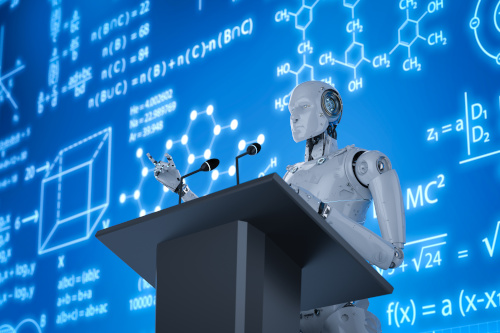Artificial intelligence, commonly abbreviated as AI, has garnered much attention in recent times, and for a good reason. Its impact has been felt across various aspects of our lives, including work, education, and more. In education, AI is poised to bring about significant changes in how we learn and teach. From personalised learning to intelligent tutoring systems, AI is revolutionising education. In this article, we will explore the trends and best practices of AI in education.
Introduction to AI in Education
AI in education refers to the use of machine learning algorithms, natural language processing, and other AI technologies to enhance teaching and learning. AI can help educators and students in a variety of ways, including:
Trends in AI in Education
There are several trends in AI in education that are shaping the future of teaching and learning. These trends include:
Personalised Learning
Personalised learning tailors education to each student’s needs, interests, and abilities. AI can help personalise learning by analysing data on each student and creating a customised learning plan. For example, an intelligent tutoring system can adapt lessons’ pace, content, and difficulty level based on the student’s progress and learning style.
Intelligent Tutoring Systems
Intelligent tutoring systems are computer programs that provide personalised instruction to students. These systems use AI algorithms to analyse data on each student and provide feedback and guidance based on their individual needs. Intelligent tutoring systems can help students learn independently and improve their understanding of difficult concepts.
Adaptive Assessments
Adaptive assessments are tests that adjust the difficulty level of questions based on the student’s responses. AI algorithms analyse the data from each student’s responses and adjust the difficulty level of subsequent questions accordingly. This ensures that each student is challenged appropriately and receives an accurate assessment of their knowledge and skills.
Automated Grading
Automated grading is the process of using AI algorithms to grade student work. This includes essays, multiple-choice questions, and other assignments. Automated grading can save teachers time and give students instant feedback on their work.
Natural Language Processing
Natural language processing refers to the capability of a computer system to comprehend and interpret human language in a manner similar to how humans communicate with each other. AI algorithms can analyse and interpret text, speech, and other forms of human communication. Natural language processing can be used in education to analyse student writing, provide feedback on grammar and style, and even evaluate student comprehension of complex texts.
Smart Content
Smart content is educational content that is interactive and adaptive. AI algorithms can analyse data on student interactions with content and adjust the content to the individual needs and abilities of each student. Smart content can help students learn more effectively and improve their understanding of difficult concepts.
Best Practices for AI in Education
While AI has the potential to revolutionise education, it is important to use it ethically and responsibly. Here are some best practices for using AI in education:
Transparency
It is important to be transparent about how AI is used in education. Teachers, students, and parents should be informed about how AI algorithms are used to personalise learning, provide feedback, and evaluate student performance.
Ethical Considerations
AI in education must be used in an ethical manner. This includes protecting student privacy, ensuring that algorithms are not biased or discriminatory, and allowing students to opt-out of using AI tools if they choose to do so.
Collaboration
AI in education should be a collaborative effort between teachers, students, and AI developers. Teachers should be involved in developing and implementing AI tools, and students should be given a voice in how AI is being used in their education.
Continuous Improvement
AI in education is still a relatively new field, and there is still much to learn about using it effectively. It is important to continuously evaluate the effectiveness of AI tools and make improvements as needed. This can involve collecting and analysing data on student performance, soliciting feedback from teachers and students, and conducting research on the best practices for using AI in education.
Training and Professional Development
To effectively use AI in education, teachers and other education professionals need to receive training and professional development on using these tools. This includes understanding how AI works, how to interpret and use the data generated by AI tools, and how to integrate AI into existing educational practices.
Balancing AI with Human Interaction
While AI can be a powerful tool in education, balancing it with human interaction is important. Education is a deeply human endeavour, and the role of the teacher and the human connection between teacher and student should not be overlooked. AI tools should be used to enhance and support human interaction, not replace it.
Conclusion
AI is revolutionising education in many ways, from personalised learning to adaptive assessments to automated grading. However, using AI ethically and responsibly is important, with transparency, collaboration, and a focus on continuous improvement. With the right approach, AI can potentially transform education and improve student learning outcomes.
